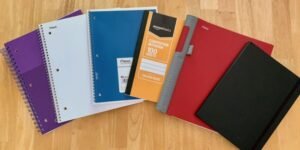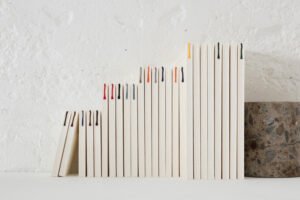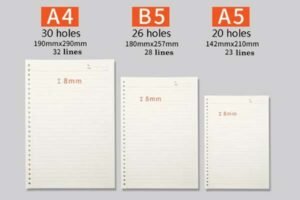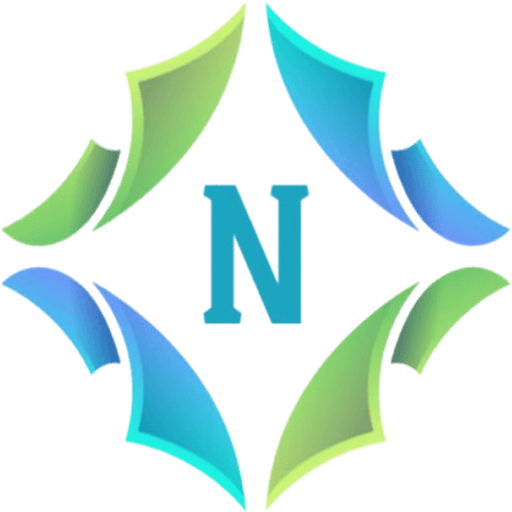
Struggling with fixed pages in standard notebooks? Need a way to easily add, remove, or reorder notes? A binder mechanism integrated into a notebook offers that adaptable solution.
A binder notebook1 uses a set of rings, usually metal, fixed inside a cover. These rings open and close. This lets you insert, remove, or rearrange loose-leaf pages, giving you flexibility traditional notebooks lack.
This binder system puts you in control of your notebook's content and structure. Unlike stitched or glued bindings, the ring mechanism allows for complete customization. Since 2006, we at NotebookRing® have specialized in manufacturing these systems. We know buyers value this modularity for creating specific tools for education, corporate needs, or retail products. It allows end-users to adapt the notebook throughout its use.
The core components are the cover and the ring mechanism. Covers can range from basic cardstock or PP plastic to more premium cloth or customized finishes. The ring mechanisms also vary. Common types include round rings and D-rings (which help pages lie flatter). The number and spacing of rings depend on paper size and regional standards.
- Common Standards: We manufacture mechanisms compatible with major international systems:
- US 3-ring (for Letter size paper)
- 6-hole (common for A5/Personal organizers like Filofax)
- 20-hole (for Japanese B5 Campus style)
- 26-hole (for Japanese A5 Campus style)
This compatibility ensures users can easily find refills. Our manufacturing allows full customization: you select the cover material and finish (hot stamping, laser engraving, embossing), the ring type, the paper weight (80gsm-120gsm, acid-free, recycled, Tomoe River), and the page format (lines, grid, dot, blank). This flexibility is key for creating bespoke notebook solutions.
Are notebook binders recyclable?
Environmental impact is a key consideration in manufacturing today. So, can the components of binder notebooks be recycled effectively?
Yes, parts of notebook binders are recyclable, but separation is required. The metal rings (steel/aluminum) are highly recyclable. Cover and page recyclability depends on the specific materials used; clean paper is easily recycled, while plastics and mixed materials vary.

Practical Recycling and Sustainable Options
Recycling a complete binder notebook usually involves dismantling it.
1. Component Separation
This is the most important step for effective recycling.
- Metal Rings: Our rings are typically 304 stainless steel or aluminum with anti-rust plating. These metals are valuable recyclables. Detach the mechanism from the cover and recycle it with metals.
- Covers:
- Paper/Cardboard: If plain and uncoated, recycle with paper.
- Plastic (e.g., PP): Check local recycling capabilities. We offer standard and degradable PP options.
- Mixed Materials (e.g., fabric laminated): Often difficult to recycle.
- Paper Pages: Loose-leaf paper is easily recycled if clean. We provide options like 80-120gsm acid-free paper and recycled paper.
2. Material Selection for Sustainability
As manufacturers, we offer choices to improve sustainability.
| Material | Recyclability/Sustainability | NotebookRing® Specifics |
|---|---|---|
| Metal Rings (Steel/Alu) | Highly Recyclable | 304 Stainless Steel / Aluminum, rust-proof plating. |
| FSC™ Certified Paper | Recyclable; from responsible forests | Available for covers/pages (Our FSC™ Cert: C106904). |
| Recycled Paper | Recyclable; reduces virgin material use | Available for inner pages at no surcharge over standard. |
| PP Plastic Cover | Recyclability varies; potentially reusable | Standard, clear, colored, and degradable options available. |
| Bagasse Fiber Cover | Often Compostable/Recyclable, renewable resource | An eco-friendly alternative material we can source. |
| Soy Ink | Plant-based, lower VOCs than petroleum ink | Available printing option for reduced environmental impact. |
3. Our Environmental Commitments
NotebookRing® holds certifications like ISO 9001 (Quality Management), FSC™ (Forest Sustainability C106904), and BSCI (Social Responsibility). We adhere to REACH/SVHC chemical safety standards. Our vertical integration allows us better control over materials and processes, aiming for responsible manufacturing in our 15,000㎡ facility. We also offer a program donating one sapling for every 100 books sold.
Do high school students use binders2?
Considering the rise of digital tools in education, are traditional ring binders still a relevant supply for high school students?
Yes, binders remain widely used by high school students. Their ability to organize materials by subject, accommodate handouts, and withstand daily use makes them a practical choice for managing coursework.
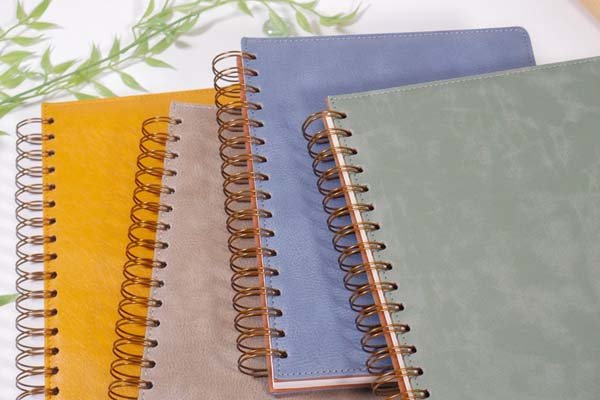
Why Binders Persist in High Schools
Binders offer distinct advantages that keep them relevant in educational settings.
Practical Benefits for Students
- Organization: Students can segment notes, homework, and teacher handouts by subject using one or multiple binders with dividers. This structure helps manage diverse coursework.
- Flexibility: Printed materials (syllabi, worksheets) provided by teachers can be easily hole-punched and added to the correct section. Pages can be reordered or removed for studying or archiving.
- Durability: A well-made binder protects contents better than softcover notebooks during transport in backpacks. We manufacture durable options suitable for student use, sometimes with reinforced bindings.
- Adaptability: Students can refill binders with standard loose-leaf paper. Different paper types (lined, graph, blank) can be combined within one binder as needed for various subjects.
Binder Formats in Education
The standard format varies globally.
- USA: 3-ring binders for 8.5" x 11" paper are prevalent.
- Europe/Asia: 2-ring or 4-ring for A4 paper, or multi-ring systems like 20/26-hole for B5/A5 paper (e.g., Kokuyo Campus compatible), are common.
As a global supplier, NotebookRing® manufactures binders meeting these diverse regional requirements. We have experience fulfilling bulk orders for educational institutions, often including customization like school logos or specific page counts (e.g., 50-page notebooks with reinforced binding).
Complementing Digital Tools
While laptops and tablets are used, many students still benefit from handwriting notes, which can aid retention. Binders provide an effective system for organizing these handwritten notes and integrating them with printed class materials, offering a physical counterpart to digital learning tools.
Your Partner for Custom Binder Notebook Manufacturing: NotebookRing®
Choosing the right manufacturer is crucial for your notebook and binder needs. You need quality, reliability, and customization capabilities.
Since 2006, NotebookRing® has specialized in paper stationery manufacturing. Our 15,000㎡, FSC-certified factory in Wenzhou, China, houses 8 full-process production lines. With a monthly capacity of 500,000+ notebooks and 2,000,000+ metal binder mechanisms, we handle orders of various scales.
Why Partner with NotebookRing®?
- Vertical Integration: We control the entire process with our own paper processing and metal stamping facilities, ensuring quality and cost control.
- Deep Customization: Select cover materials (PP, paper, cloth), finishes (hot stamping, laser, embossing), paper types (80-120gsm, recycled, specialty), page formats, and ring mechanisms (compatible with Filofax, Campus, US 3-ring, etc.).
- Quality Assurance: We are ISO 9001, FSC™ (C106904), and BSCI certified, meeting REACH/SVHC standards. Our 4-level quality inspection ensures product reliability (e.g., ISTA 3A transport simulation).
- Flexibility: We support sample orders from 100 units (basic versions) and full production runsstarting from 500 units.
- Global Logistics: We offer 30-day standard delivery (expedited options available) and support EXW/FOB/DDP terms, serving markets across Europe, America, Japan, Korea, and the Middle East.
- Proven Track Record: We supply German bookstores, Silicon Valley tech companies, and Japanese stationery brands, delivering customized solutions that meet specific market needs.
Let us be your manufacturing partner for ingenious writing tools.
Contact: Timothy Wei | General Manager
Email: info@notebookring.com
Website: www.notebookring.com (Supports English/Chinese/Japanese)
Request your free physical sample book today (includes 20+ material samples) and receive an OEM proposal within 24 hours.
Conclusion
A notebook binder uses metal rings for flexible page management. Key parts like metal rings are recyclable if separated. Binders remain a staple organizational tool for many high school students due to their practicality and adaptability.

